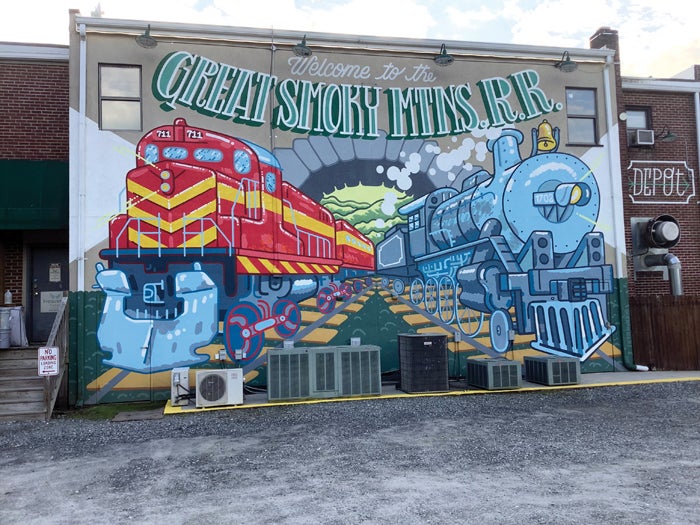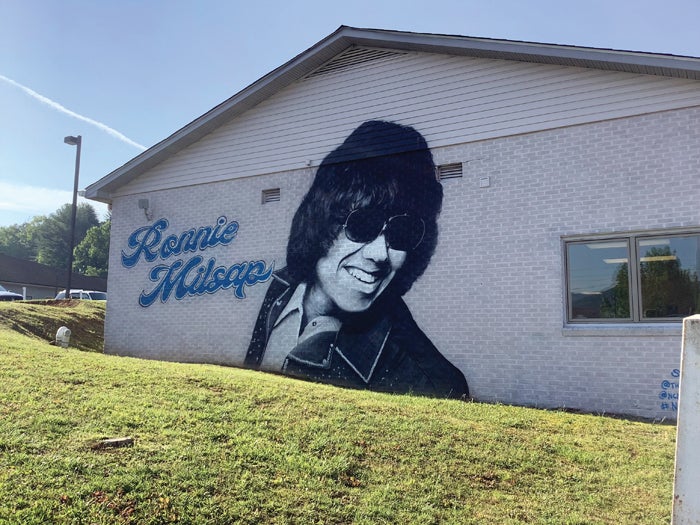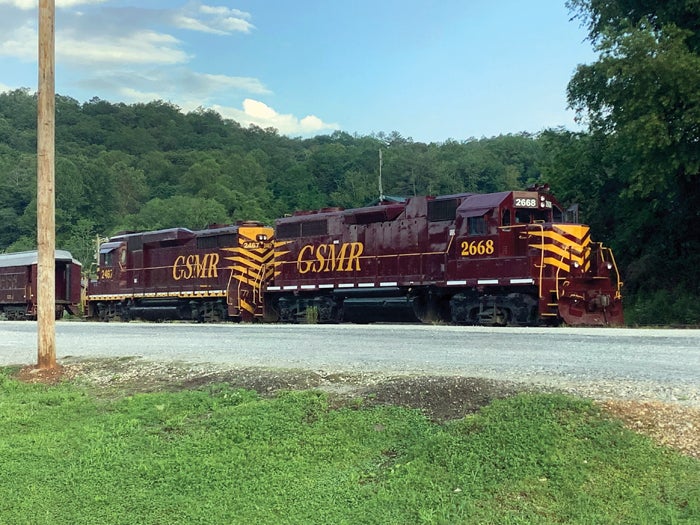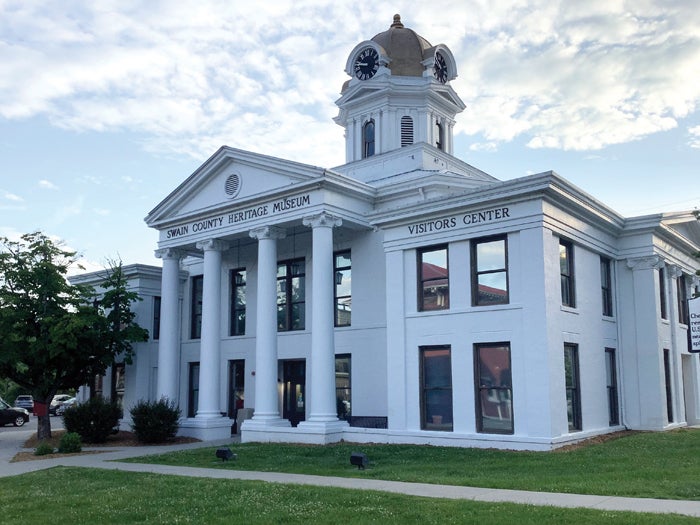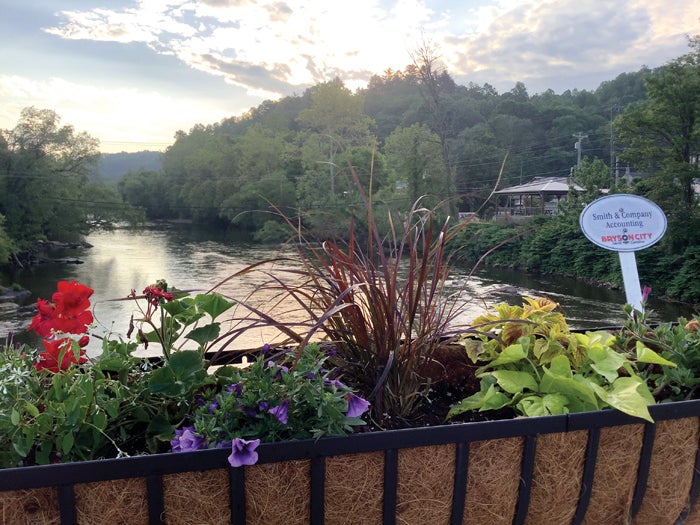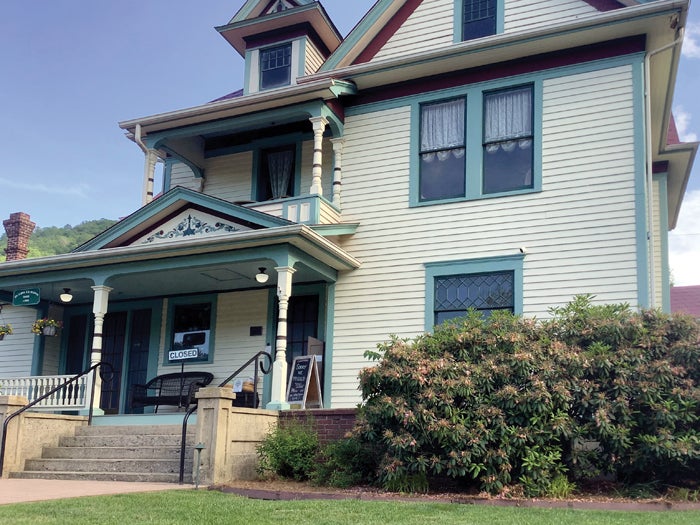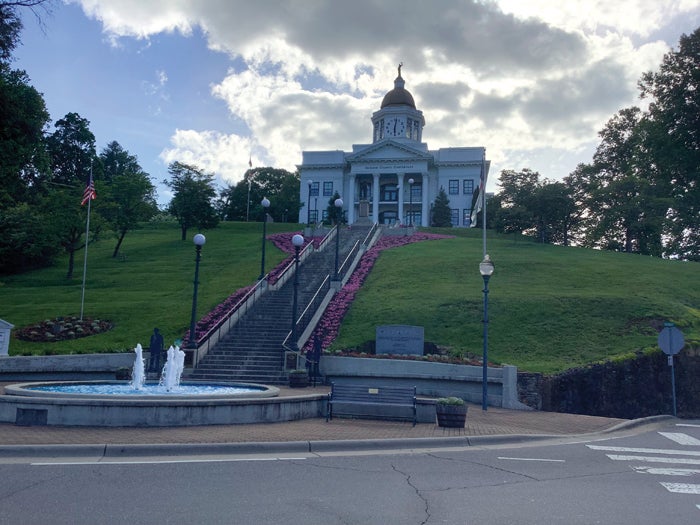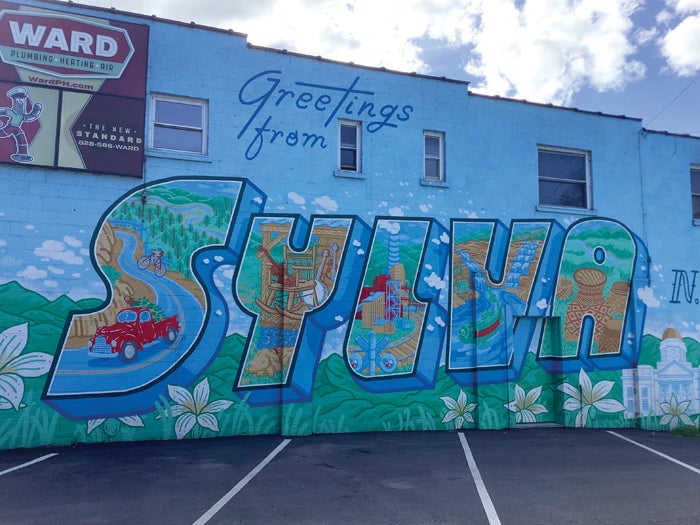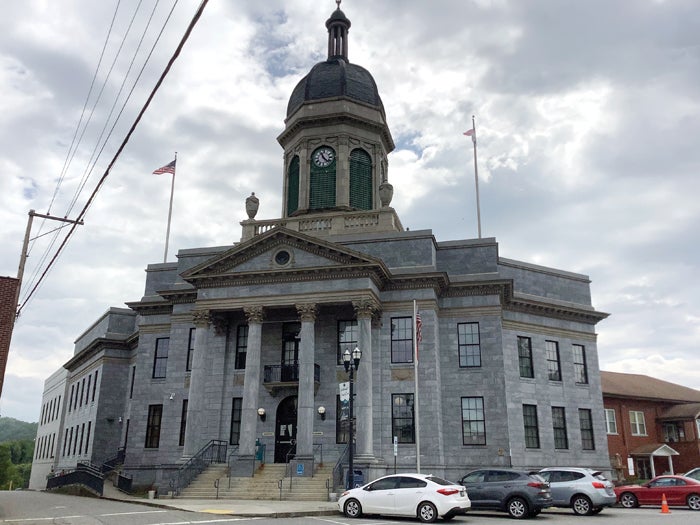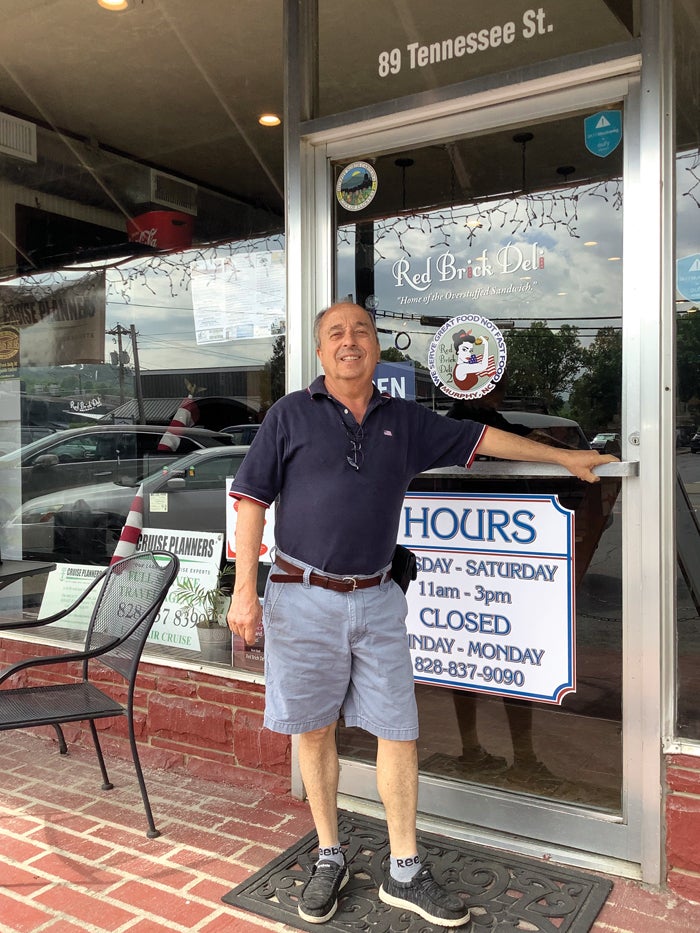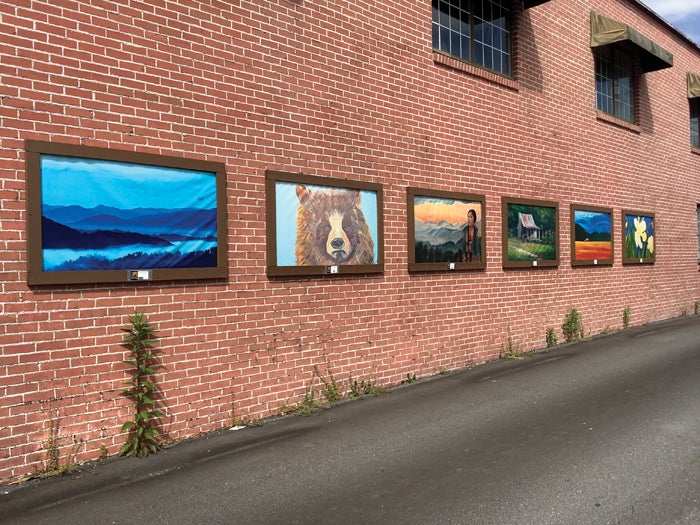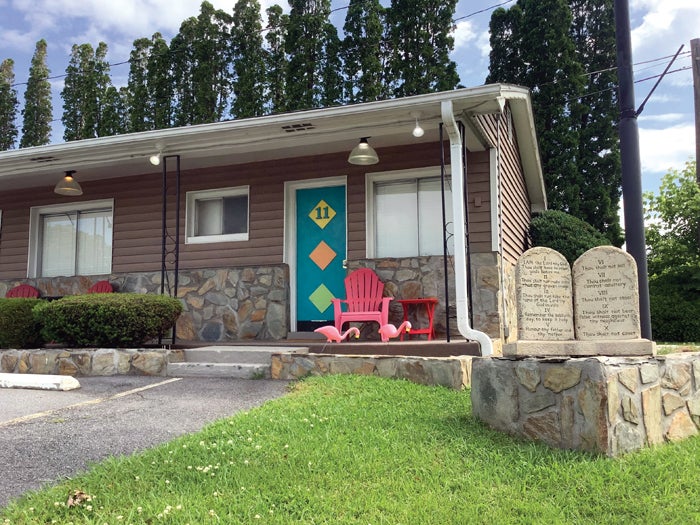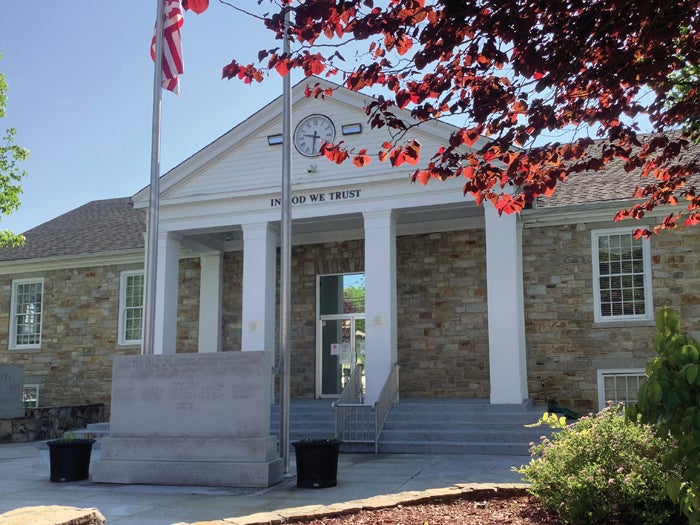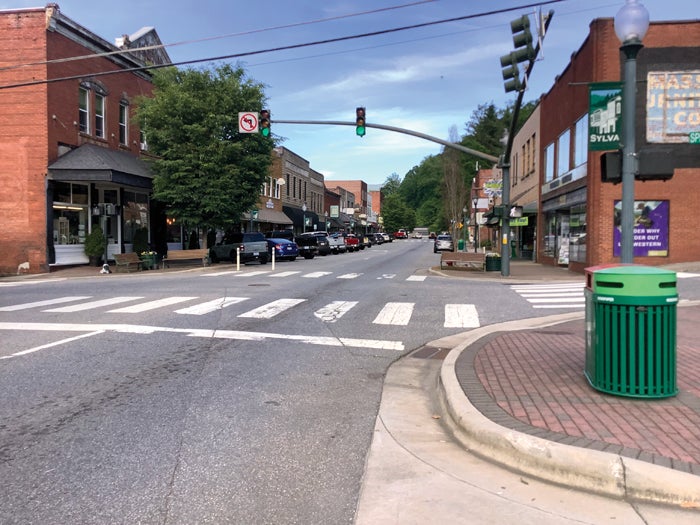David Freeze: The farthest counties west
Published 12:05 am Thursday, June 1, 2023
|
Getting your Trinity Audio player ready...
|
Editor’s note: David Freeze is a runner, running coach and long-distance cyclist from China Grove in Rowan County. He is completing a challenge to run in a few miles in every county seat in all 100 N.C. counties. Contact him at david.freeze@ctc.net.
By David Freeze
I ended my day on May 17 in Sylva, nearest to my first college at Western Carolina University. Sylva got a railroad in 1913 and with it gained the county seat designation for Jackson County. The courthouse, built in 1914, is one of the most spectacular I’ve seen because it sits on top of the highest hill at the end of Main Street.
Thomas Edison and Franklin Delano Roosevelt both visited Sylva, and three movies were partially filmed here. Those movies included “Deliverance,” “The Fugitive” and “Three Billboards Outside.” Downtown Sylva is flat with a familiar smell in the air on the evening I explored the town. Paper mills are common in the area, and that smell is certainly distinct.
I spent the night at the Blue Ridge Inn, a super nice place near the end of Main Street and the courthouse, and right across from the Dr. Delos Dexter Hooper house. The Hooper house was built in 1906 and is the local visitor center. Sylva is wonderful with plenty of interesting shops, restaurants and bookstores, all in the middle of its social district. A different section of town has many of the recognizable national stores.
Up early on May 18, I made the short drive to Bryson City, county seat for Swaim County and part of the original Cherokee land. The town is known for the Great Smoky Mountain Railroad, and it certainly dominates the town. The GSMR operates on former Southern Railway rails between Dillsboro and Bryson City while serving over 200,000 riders a year. Early investors were able to lease the track just 48 hours before Norfolk Southern would have begun dismantling it. With locomotives already running, the first train was ready to roll out early this morning.
Native Americans have been living and hunting along the Tuckasegee River, which flows through town, for over 14,000 years. Originally called Charleston and incorporated in 1887, the name was changed to Bryson City when the county seat was formed from the combination of parts from Jackson and Macon counties. The name change honored Thaddeus Bryson, a key player in local development.
The current courthouse was built in 1908, the third in the town’s history. The Calhoun House Hotel was built in 1904 and is still in use today. Lots of real estate offices are on Main Street, and the town is surrounded by mountains on all sides, including the Great Smokey’s and the Nantahala National Forrest.
Next on a still early morning was Robbinsville, seat of Graham County. Fort Montgomery, built to help with the removal of the Cherokee, was granted a post office in 1849, and the name was changed to Robbinsville in 1874. Most claim Robbinsville was named after Sen. James L. Robinson of Macon County, but some believed the name may have been derived from Mr. Robbins of Clay County, who taught at the first school.
Parts of The Fugitive were filmed here, as was “Nell,” starring Jodie Foster, and “A Walk in the Woods.” The current courthouse was finished in 1842 and sits at 12 Main Street. Robbinsville’s most famous resident was country singer and pianist Ronnie Milsap, honored by a mural near the courthouse.
Murphy was next, the farthest western town in North Carolina, closest to the Tennessee line. It is at the confluence of the Hiwassee and Valley Rivers and had been called Huntington and Murphey before settling on Murphy. The county seat of Cherokee county, Murphy is situated on Cherokee homelands. The town was not incorporated until 1851, after Cherokee county was formed from Macon County in 1839.
In 1836, the U.S. Army built Fort Butler in town to help with the removal of the Cherokee, which became widely known as the Trail of Tears. The Cherokee County courthouse was built in 1927 and is faced with locally sourced blue marble. Abraham Enloe, purported by historians to be Abraham Lincoln’s father, is buried in town.
I took the time to reminisce a little about my run across N.C., with Murphy as the first night on the road. I visited the Sunset Motel and saw other familiar sites, including Walmart where I got a radio to help pass the time on the road. Murphy has beautiful mountain themed portraits posted outdoors around town. My best encounter in town was with Phil Williams, who claimed he was just a worker at the Red Brick Deli. Born up north, Phil was living in Florida and decided to leave the heat and humidity behind and become a halfback (someone who only moves halfway back to the north). Phil told me, “Murphy’s a wonderful town! I’m so glad we live here. We have a festival every Thursday afternoon at 5 p.m.” I bought a fantastic huge homemade brownie. Phil said one day that he and his wife were going to drive the state all the way to the coast, to which I said, “Just get on U.S. 64 and follow it all the way to the Outer Banks. I did it on foot.”
I really enjoyed Murphy, another thriving and fun little town, surrounded by history and beautiful mountain vistas. All the western N.C. towns so far are historic and fun. We have now totaled 46 counties visited and this segment included running, walking and photos for 6.31 miles. Back soon with the push to halfway!


